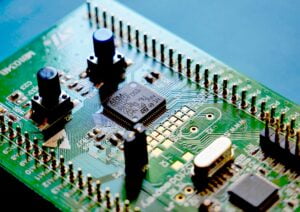In today's era, where artificial intelligence (AI) technology is increasingly integrating into every aspect of our lives, deploying machine learning models on mobile and embedded devices has become particularly crucial. TensorFlow Lite (TFLite), developed by Google, is a lightweight machine learning library specifically designed for mobile and edge devices to optimize and run TensorFlow models. This article aims to delve into the operational characteristics of TensorFlow Lite across various hardware platforms, its application domains, how it addresses specific issues, and its integration with cloud-based TensorFlow, highlighting its potential to enhance home energy efficiency.
Introduction to TensorFlow Lite's Impact on AI Deployment
As AI becomes more embedded in our daily routines, the significance of deploying machine learning models on mobile and embedded devices cannot be overstated. TensorFlow Lite emerges as a pivotal solution in this landscape, offering a streamlined framework for bringing powerful AI capabilities to the edge. Developed by Google, TFLite is tailored for optimizing TensorFlow models on mobile and edge devices, ensuring efficient performance and responsiveness in a wide range of applications. This exploration seeks to uncover the nuances of TFLite's functionality across different hardware platforms, its broad applicability, and its role in overcoming challenges associated with traditional cloud-based AI solutions.
Operational Characteristics of TensorFlow Lite Across Hardware Platforms
Mobile Devices
- Performance Optimization: TFLite stands out for its ability to enhance computational efficiency, reduce model size, and accelerate execution speed on CPUs, making it highly suitable for mobile environments.
- Hardware Acceleration Support: It leverages the Neural Networks API (NNAPI) to enable GPU and DSP acceleration on Android devices and utilizes Metal and Core ML for acceleration on iOS devices, maximizing hardware capabilities.
Microcontrollers and Embedded Devices
- Ultra-Low Power Operation: Specifically designed for microcontrollers and low-power devices, TFLite Micro supports operation in environments without an operating system, drastically reducing energy consumption.
- Cross-Platform Compatibility: It boasts the ability to run on a variety of microcontroller and embedded platforms, including ARM Cortex-M series and ESP32, ensuring broad applicability.
Edge Computing Devices
- Real-Time Processing: Deploying TFLite models on edge computing devices enables real-time data processing, reducing the need for cloud data transfers and enhancing response times.
- Enhanced Privacy Protection: By processing data directly on the device, TFLite helps strengthen user data privacy, offering an additional layer of security for sensitive information.
Application Domains and Directions of TensorFlow Lite
TFLite's lightweight and efficient nature make it widely applicable across multiple sectors:
- Smart Home: In the smart home domain, TFLite powers devices like smart speakers and security cameras, enabling voice recognition, facial recognition, and other functionalities that enhance convenience and security.
- Health Monitoring: Deploying TFLite models on wearable devices allows for real-time health metrics monitoring, such as heart rate and step count, providing valuable insights for personal health management.
- Industrial Automation: TFLite finds application in fault detection and quality control within industrial settings, improving production efficiency and safety.
- Agricultural Technology: Through plant disease identification and soil analysis, TFLite contributes to increased crop yield and quality, showcasing its potential in advancing agricultural practices.
Combining TensorFlow Lite with Cloud-Based TensorFlow
TFLite addresses several key issues by running machine learning models directly on devices:
- Latency Reduction: It minimizes data processing delays by eliminating the need for data transfers between devices and the cloud.
- Cost Reduction: By reducing reliance on cloud computing resources, TFLite lowers the cost associated with data processing.
- Increased Availability: It ensures application functionality even in environments without network connectivity.
When used in conjunction with cloud-based TensorFlow, TFLite typically handles model inference, while model training and iterative updates are conducted in the cloud. Developers can train models using TensorFlow in the cloud, convert them into TFLite format using the TFLite Converter, and deploy them on mobile or edge devices. This approach combines the computational power of the cloud with the real-time processing capabilities of edge devices, facilitating rapid iteration and efficient operation of intelligent applications.
As a lightweight machine learning solution, TensorFlow Lite's operational characteristics across different hardware platforms, its extensive application domains, and its problem-solving capabilities illustrate its importance as a tool for future intelligent application development. Through close integration with cloud-based TensorFlow, TFLite is well-positioned to meet the efficiency, cost, and privacy needs of modern intelligent applications, pushing the boundaries of AI technology towards edge computing. With continued technological progress and ecosystem maturity, TensorFlow Lite is expected to play an increasingly significant role in the intelligent future, leading the way towards more efficient, environmentally friendly applications in smart homes, health monitoring, industrial automation, and agricultural technology.

